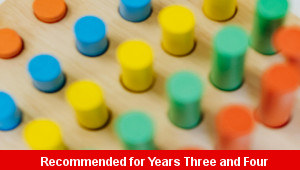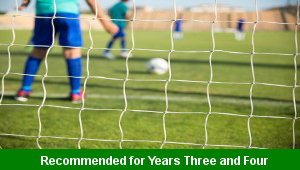Story Reverses

You can help the children develop understanding about how to structure a fictional story by getting them to reverse the sequence of events when re-writing the narrative. The class should select familiar stories to investigate their common features and sequence of events before attempting to reverse the narrative.
Story Selection
You should get the class to select a familiar story with a clear sequence and structure to use for their narrative reverses. This will help the children develop their understanding of the common features of story genres such as traditional tales which will make it easier to identify the sequence of events before reversing the narrative. Try and match any stories selected to a classroom topic such as using fables as part of a topic on animals that live in a specific habitat. The children can then utilise their topic knowledge to build and manage content for their reverse stories for example referencing parts of an animal to describe how they might move about in a story or where they might choose to make a home.
Story Sequencing
The class can begin their activity by spending time recording the sequence of narrative events in the story that they have selected for reversal. Get the children to record the sequence of events on pieces of card which can then be threaded on a piece of string to make a story chain. Tell them to use simple language to record each event without going into significant character and setting descriptions. Spend some time discussing with the class the sequence of events that they have identified and suggest how the narrative structure might change if some of the narrative events were swapped about in the story.
Story Changes
Next get the children to use the story sequencing chains to reverse the telling of the story. They can follow the sequence of events recorded on each step to tell the story in reverse. The class will need to make some simple edits to the content of each part of the story so that it matches the reverse to the sequencing. For example, when reversing the story of Goldilocks the children can open the story by getting the main character to run into the cottage to meet the three bears who tell her to sleep on the bed belonging to the littlest bear before waking up to make some porridge for the bears to eat and repair a broken chair.
Puppet Plays
The children could make some puppets in an art and design lesson to retell their story reverses. The class can make some puppet heads using papier mache on top of a wooden dowel. The children can then wrap cloth around the dowel to make the character’s clothing. They can then practise performing their story reverses using the puppets before presenting the completed plays to another group of children in the school.
Audio Books
The class can also make some audio books to share their story reverses with the school. Get the children to make an audio file on the computer to share a reading of their story. Encourage them to spend time rehearsing the reading of their story including the use of character voices and special effects. Teach the class how to record and edit their recordings including selecting the correct volume level and how to pause and restart their recording. Upload the completed audio books to the school network for other pupils in the school to access.
-

Times Tables Division
Practise using facts in each of the times tables to support the division of pairs of numbers when solving a range of problems
-

Football Teams
Investigate and record how to format and structure letters that could be sent to and from football teams for different purposes and functions
-

Sporting Poems
Practise writing poems with patterned language and rhythm structures to describe movements and actions connected to different sports and games
-

Food and Drink
Select powerful and descriptive vocabulary to use in poems describing different types of food and drink that can be enjoyed for a range of meals
